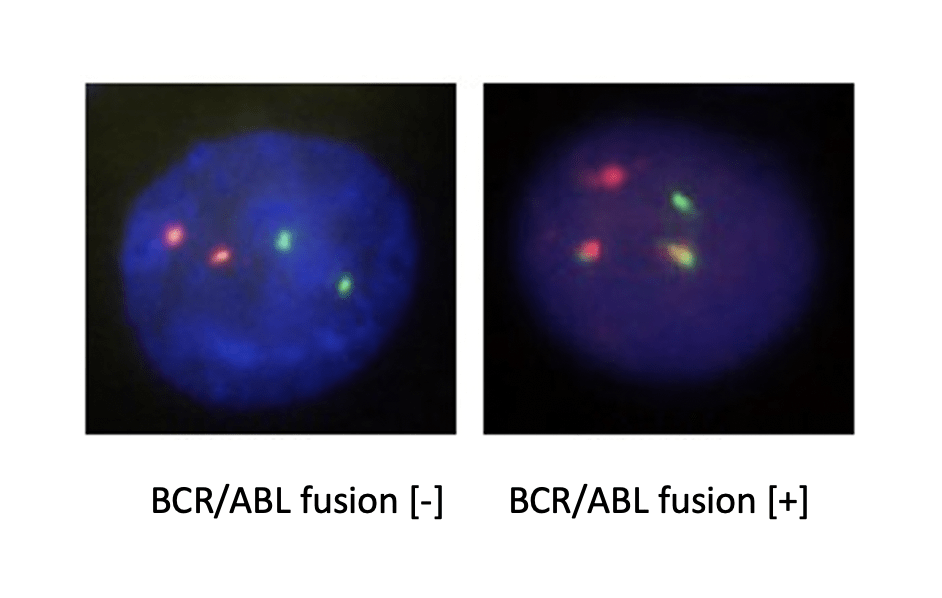
BCR/ABL is a dual-color double fusion probe designed to detect specific translocations of the ABL1 gene of chromosomal region 9q34.12 and the BCR gene of 22q11.23. Random rearrangements of t(9,22) (q34.1, q11) were found in approximately 90% of patients with chronic myelogenous leukemia (CML) and approximately 25% of acute lymphoblastic leukemia (ALL). Frequent translocations result in the production of the BCR/ABL gene fusion on chromosome 22. The gene product is a BCR/ABL protein with an abnormal tyrosine kinase activity. In normal cells, ABL kinase activity is well regulated by growth factors and other factors, while BCR/ABL proteins fusion result in sustained activation of downstream signaling pathways (Ras, Jak/Stat, and PI-3K). Fluorescence in situ hybridization (FISH) allows the identification of rearrangements that could not be detected by conventional nuclear types.
ABL probe uses an orange-red fluorescein label, and BCR probe uses a green fluorescein label. The two probes combine to the target detection site by in situ hybridization. Under normal conditions (BCR/ABL gene is not fused), it shows two orange-red signals and two green signals under a fluorescence microscope. When there is fusion, the green and orange-red signals form a yellow fusion signal due to recombination.

BCR/ABL gene fusion is a common cytogenetic abnormality in patients with chronic myeloid leukemia (CML). BCR/ABL gene fusion can be found in 90% of CML patients. Patients with BCR/ABL gene fusion have poor prognosis. It is clinically possible to selectively use molecular targeted therapeutic drugs depending on whether a patient has a BCR/ABL gene fusion. In addition, the clinician can combine the patient’s other signs to make more effective differential diagnosis.

Product size: 100μL FISH probe ( ⬤ | ⬤ ) + Pretreatment reagent (10 tests) + Antifade staining solution DAPI (10 tests).